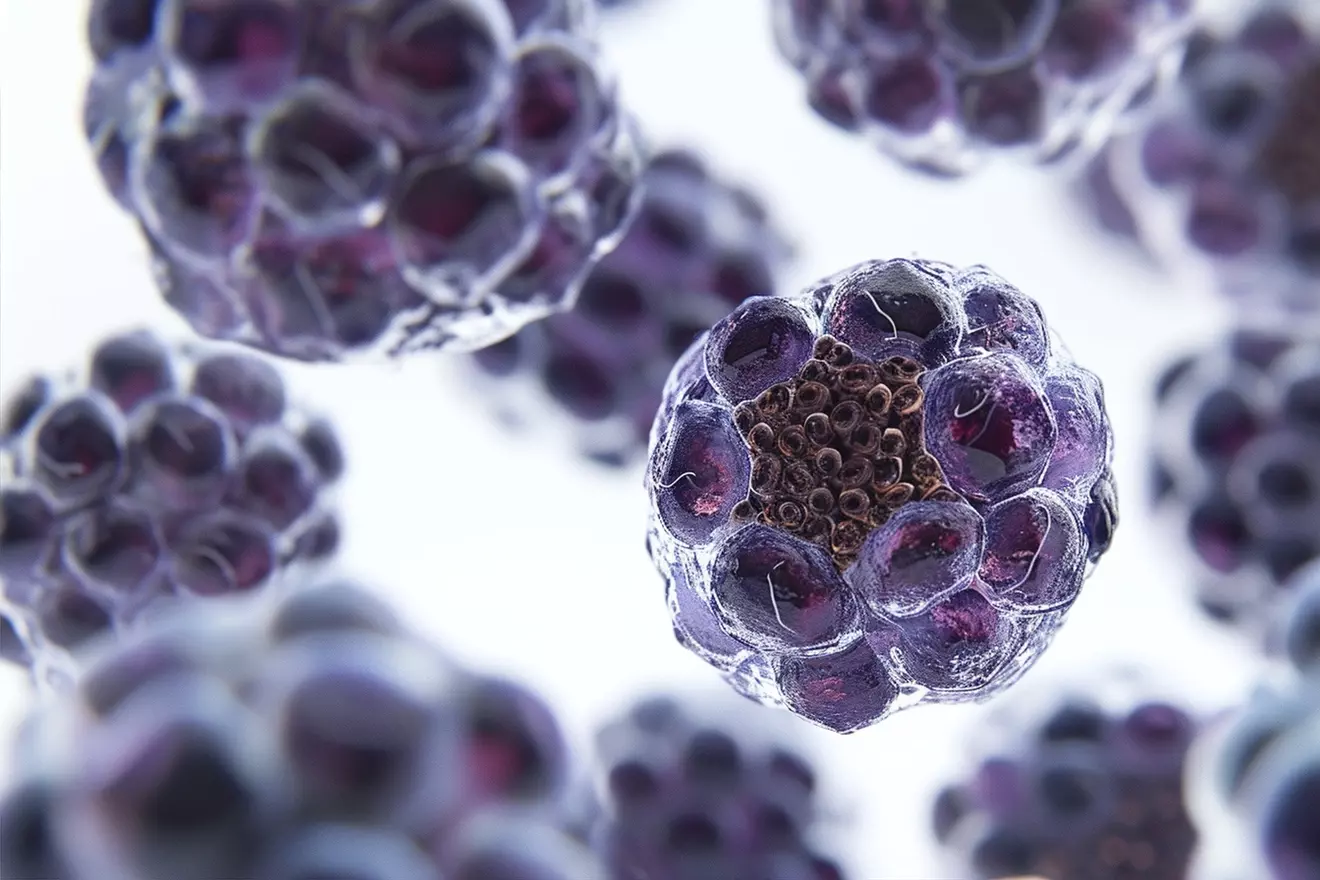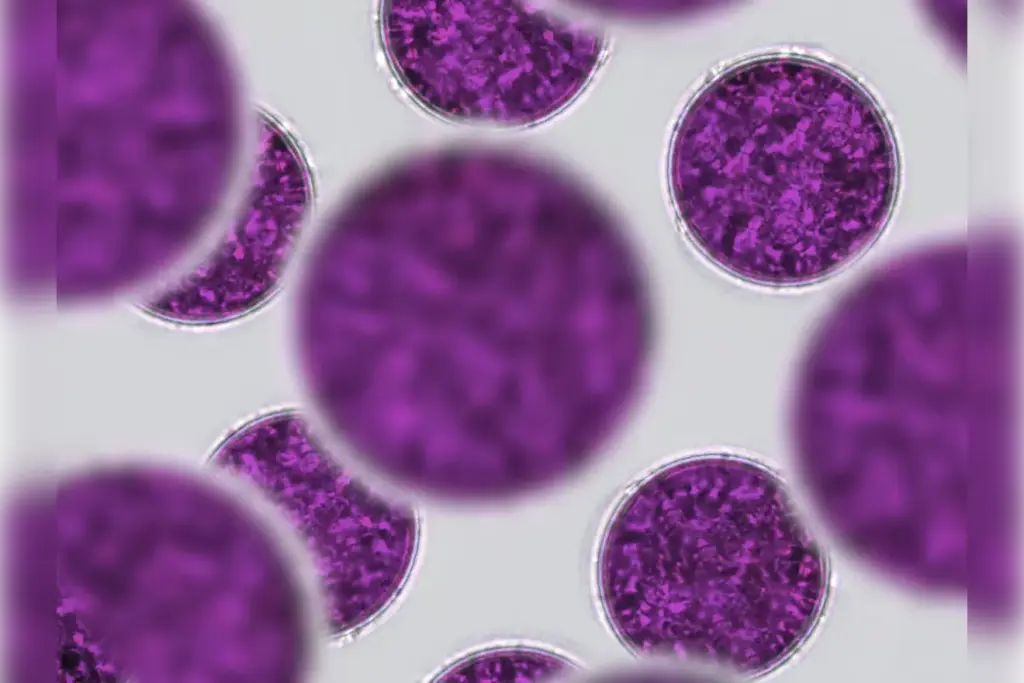Last Updated on November 27, 2025 by Bilal Hasdemir

At Liv Hospital, we focus on the immune system, with a special look at B cell lymphocytes. They are key to our body’s defense.
B cell lymphocytes are a type of white blood cell. They help our body fight off infections by making antibodies. We’ll dive into their key functions and why they’re so important.
Learning about the role of B cells helps us understand how our immune system works. It shows us how these cells keep us healthy.
Key Takeaways
- B cell lymphocytes are vital for adaptive immunity.
- They produce antibodies to fight infections.
- Their dysfunction can lead to various immune-related disorders.
- Understanding B cells is key for developing effective treatments.
- B cells play a significant role in our overall health.
What Are B Cell Lymphocytes and Their Importance
It’s important to know about B cell lymphocytes to understand how our immune system fights off infections. B cells are a key part of our immune system. They help us remember and fight off specific germs, giving us long-term protection.
Definition and Basic Characteristics
B cell lymphocytes are special white blood cells that make antibodies. These proteins find and stick to specific germs. They start in the bone marrow and grow into B cells.
The main job of B cells is to make antibodies. These antibodies help fight off germs by marking them for destruction or stopping them from getting inside our cells.
B cells can also turn into plasma cells, which are like factories that make lots of antibodies. This is key for a strong immune response against infections.
Evolutionary Significance in Adaptive Immunity
B cell lymphocytes are important because they help our immune system adapt and remember past infections. This memory is what vaccines rely on to protect us from getting sick again.
B cells help our immune system in many ways, like making antibodies and working with other immune cells. Their ability to recognize different germs is thanks to a process called somatic hypermutation.
| Characteristics | Functions | Importance |
|---|---|---|
| Antibody Production | Neutralize pathogens | Protects against infections |
| Immunological Memory | Remembers past infections | Provides long-term immunity |
| Antigen Presentation | Activates other immune cells | Enhances immune response |
The Origin and Development of B Cell Lineage
B cell lineage starts with hematopoietic stem cells. These cells go through many stages to become B cells. B cells are key to humoral immunity. We’ll look at where B cells come from and how they mature.
Hematopoietic Stem Cell Origins
The journey of B cell development starts in the bone marrow. Hematopoietic stem cells can turn into different blood cells, including B lymphocytes. Studies show that many factors control B cell development. This ensures B cells work well Frontiers in Immunology.
Developmental Stages in B Cell Maturation
B cell maturation has several stages: pro-B cell, pre-B cell, immature B cell, and mature B cell. B cells go through gene rearrangement and selection. This helps them recognize and fight off antigens without attacking themselves.
The stages are marked by specific surface markers and genes. Knowing these stages helps us understand B cell biology. It also sheds light on mechanisms behind B cell-related disorders.
Where Are B Cell Lymphocytes Produced?
It’s important to know where B cell lymphocytes come from. They play a key role in our immune system. B cells are made in a specific place in our body.
B cells are essential for fighting off infections. Their production site is vital for their growth. The bone marrow, a spongy tissue in our bones, is where B cells are made.
Bone Marrow: The Primary Production Site
The bone marrow is the soft, fatty tissue inside our bones. It’s responsible for making blood cells, including B lymphocytes. It has the right environment for B cells to grow from stem cells.
B cell development in the bone marrow involves several critical steps. These include rearranging genes and expressing specific markers. These steps help B cells mature.
Regulatory Factors Controlling B Cell Production
The bone marrow tightly controls B cell production. Several factors are involved:
- Cytokines, like IL-7, support B cell growth
- Transcription factors manage gene expression during B cell maturation
- Interactions between B cell progenitors and bone marrow cells
These factors ensure B cells develop correctly. Any problem can cause immune issues or autoimmune diseases.
| Regulatory Factor | Function in B Cell Production |
|---|---|
| IL-7 | Supports the survival and proliferation of B cell progenitors |
| Transcription Factors (e.g., EBF1, PAX5) | Control the expression of genes critical for B cell development and identity |
| Stromal Cell Interactions | Provide essential signals for B cell maturation and selection |
In conclusion, the bone marrow is where B cell lymphocytes are produced. Their development is controlled by many factors. Understanding these processes helps us appreciate how our immune system works and how it can go wrong.
Structural Characteristics and Histology of B Cells
B cells, or B lymphocytes, have unique features that help them fight off infections. We’ll dive into these details to see how B cells help our immune system.
Cellular Morphology and B Cell Histology
B cells are small lymphocytes with a big, tight nucleus and little cytoplasm. This is what you see when you look at them under a microscope. The nucleus is often off-center, and the cytoplasm has few organelles. This shows they focus more on fighting infections than on doing lots of work.
Surface Markers and B Cell Receptors
B cells have special markers and receptors on their surface. B cell receptors (BCRs) are key for finding and binding to antigens. They are made of membrane-bound immunoglobulins and Igα and Igβ molecules.
Other important markers include CD19, CD20, and CD21. They help B cells get activated, change into different types, and talk to other immune cells. These markers are vital for B cell work and are also targets for treatments in immune diseases.
Distribution of B Cell Lymphocytes Throughout the Body
B cell lymphocytes are found in key areas of the body. They are in primary and secondary lymphoid organs. This helps them fight off infections. The bone marrow is where B cells grow and mature.
Secondary lymphoid organs like the spleen and lymph nodes are where B cells meet antigens. This is where they get activated to fight off infections.
Concentration in Lymphoid Organs
B cells are found in specific spots in lymphoid organs. In the spleen, they are in the white pulp. In lymph nodes, they are in the follicles.
This helps B cells work well with other immune cells. It lets them fight off infections effectively.
| Lymphoid Organ | B Cell Location | Function |
|---|---|---|
| Bone Marrow | Throughout the marrow | B cell development and maturation |
| Spleen | White pulp | Antigen processing and immune response |
| Lymph Nodes | Follicles | Antigen presentation and B cell activation |
Circulation and Migration Patterns
B cells move through the blood and lymphatic system. They go between lymphoid organs. This helps them find and fight off infections.
Their movement is guided by special molecules. These molecules help B cells know where to go in lymphoid organs.
“The circulation of B cells through lymphoid organs is a highly regulated process, essential for the initiation of immune responses.”
As B cells move, they meet other immune cells and antigens. This shapes their role in fighting infections. Knowing how they move helps us understand B cell biology and how to treat diseases.
We’ve learned about B cell lymphocytes’ spread across the body. They are in primary and secondary lymphoid organs and move around. This is key to understanding their role in immunity and how we can use them to treat diseases.
The Activation Process of B Cell Lymphocytes
Understanding how B cells are activated is key to knowing how our body fights off infections. The process of activating B cells is complex. It involves recognizing antigens and then turning into cells that make antibodies or remember the infection.
Mechanisms of Antigen Recognition
B cells find antigens using their surface-bound immunoglobulins, or receptors. When an antigen binds to its B cell receptor, it starts a chain of signals. This antigen recognition is very specific, helping B cells target specific pathogens.
The process includes taking in the antigen, breaking it down, and showing parts of it to T cells. This step with T cells is key for B cells to fully activate, mainly for T cell-dependent antigens.
T Cell-Dependent and T Cell-Independent Activation
B cells can be activated in two main ways: with or without T cells. T cell-dependent activation needs T helper cells to recognize the antigen. This teamwork leads to B cells becoming antibody-making plasma cells or memory B cells.
On the other hand, T cell-independent activation happens with certain antigens. These antigens can directly activate B cells without T cell help. They usually have repeating patterns that can link many B cell receptors together.
Both methods are important for a strong immune response. T cell-dependent activation is more common. It allows for a more varied and precise antibody response.
How Activated B Lymphocytes Differentiate Into Specialized Cells
Activated B lymphocytes can turn into specialized cells that are key for a strong immune system. This change is important for a good immune response.
We will look at how these cells become plasma cells and memory B cells. These cells have different jobs in fighting off infections. They go through many changes to do their jobs well.
Plasma Cell Development and Antibody Secretion
Activated B cells often become plasma cells. These cells make lots of antibodies. Antibodies help fight off infections by attacking harmful invaders.
Plasma cells go through big changes to make better antibodies. They switch types and get better at finding and sticking to invaders. This makes their antibodies more effective.
Antibodies from plasma cells are vital for fighting off infections. They can stop or remove harmful invaders. This helps keep us healthy.
Memory B Cell Formation and Long-term Immunity
Activated B cells also become memory B cells. These cells help us fight off infections we’ve had before. They remember the invaders and can quickly make more antibodies.
Memory B cells can quickly make more antibodies when they see the same invader again. This fast response helps keep us from getting sick again.
Memory B cells are important for long-term protection. They help our immune system remember and fight off infections we’ve had before. This makes our immune system stronger over time.
The Critical Functions of B Cells in Humoral Immunity
B cells are key in humoral immunity. They make antibodies and present antigens to T cells. These roles are vital for a strong immune response.
Antibody Production and Diversity
B cells create antibodies to fight specific pathogens. They do this by recognizing and binding to antigens. This process is essential for neutralizing threats.
Antibody diversity comes from V(D)J recombination. It allows for a wide range of antibodies from a few genes.
Here’s how B cells make antibodies:
- Antigen Recognition: B cells find antigens with their antibodies.
- Activation: When they find an antigen, B cells get activated, sometimes with T cell help.
- Proliferation and Differentiation: Activated B cells grow and turn into plasma cells, which make lots of antibodies.
- Antibody Secretion: Plasma cells release antibodies into the blood.
B Cells as Antigen-Presenting Cells
B cells also present antigens to T cells. They take in antigens, break them down, and show parts of them on their surface. This is key for starting and managing T cell actions.
Here’s how B cells work as APCs:
- Antigen Uptake: B cells grab antigens with their antibodies.
- Processing: They break down the antigens into peptides.
- Presentation: They show these peptides on their surface to CD4+ T cells.
- Activation of T Cells: This helps turn on T cells, which is important for a good immune response.
B cells are vital in humoral immunity. They make antibodies and present antigens. This makes them essential for defending against infections.
Conclusion: The Indispensable Role of B Cell Lymphocytes in Health and Disease
We’ve looked into the world of B cell lymphocytes. We’ve learned about their structure, how they’re made, and their role in the immune system. B cells are key to our body’s defense, making them very important.
B cells help fight off infections by making antibodies. They also present antigens to other immune cells. This shows how vital they are in keeping us healthy and fighting off diseases.
B cells are essential for long-term protection against infections. When they don’t work right, it can lead to diseases like autoimmune disorders and lymphomas. Knowing how B cells work helps us create better treatments and improve health outcomes.
As we learn more about the immune system, B cells remain a key area of study. They play a big part in keeping our immune system balanced and fighting off pathogens. This makes them a cornerstone in the fight against disease.
What is the role of B cells in the immune system?
B cells are key in the immune system. They make antibodies and present antigens. This helps fight off pathogens.
Where are B lymphocytes produced?
B lymphocytes start in the bone marrow. There, they grow into mature B cells.
What is the function of B cells in humoral immunity?
B cells are vital for humoral immunity. They make antibodies that target specific antigens. This helps neutralize pathogens.
How do activated B lymphocytes differentiate?
Activated B cells turn into plasma cells and memory B cells. Plasma cells make lots of antibodies. Memory B cells help fight infections later.
What is the significance of B cell histology?
Knowing B cell histology helps us understand their structure and where they are in the body. This is key for diagnosing immune disorders.
How do B cells recognize antigens?
B cells use their B cell receptors to find specific antigens. This activation starts the immune response.
What is the role of T cells in B cell activation?
T cells are important for B cell activation. They give B cells the signals needed to grow and differentiate.
Where do B cells circulate and migrate?
B cells move through the blood and lymphoid tissues. This lets them find and fight antigens.
What are the different developmental stages of B cells?
B cells go through stages like pro-B, pre-B, immature, and mature. Each stage has unique genetic and physical changes.
What is the importance of B cells as antigen-presenting cells?
B cells can present antigens to T cells. This is key for starting an immune response and coordinating immune actions.
References
- Beckman Coulter. B cells (Blood Cells → Leukocytes → Lymphocytes). Available from: https://www.beckman.com/resources/cell-types/blood-cells/leukocytes/lymphocytes/b-cells
- Kenhub. Lymphocytes – Anatomy & Function. Available from: https://www.kenhub.com/en/library/anatomy/lymphocytes
- Wikipedia. B cell. Available from: https://en.wikipedia.org/wiki/B_cell
- University of Leeds, Histology. B & T Lymphocytes. Available from: https://www.histology.leeds.ac.uk/lymphoid/B_T_lymphocytes.php
- TeachMePhysiology. B cells – Immune System / Cells of the Immune System. Available from: https://teachmephysiology.com/immune-system/cells-immune-system/b-cells/








